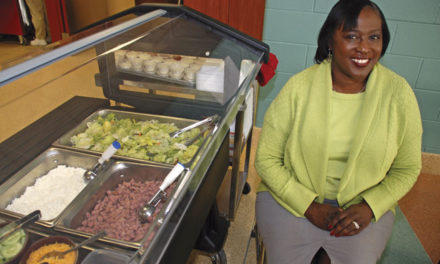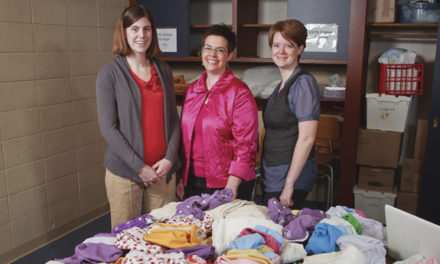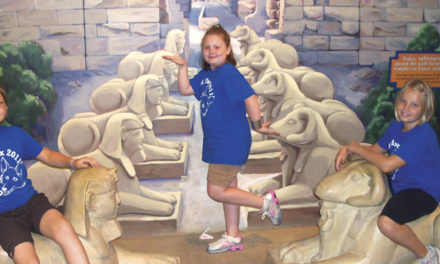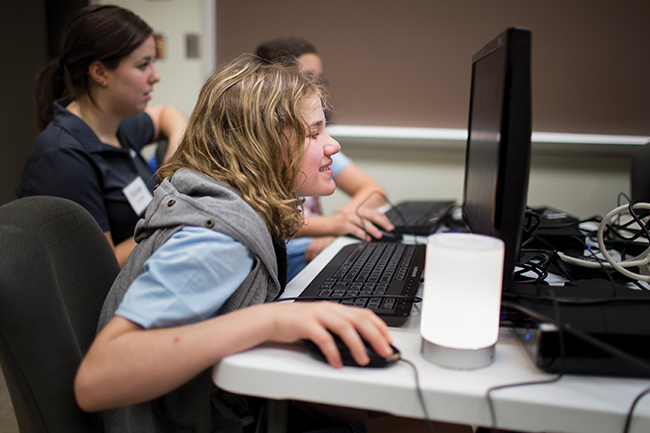
Haley Shelburne, 13, works on a video game she created at GirlPowered! Photo by James Brosher, IU Communications
BY ERIN HOLLINDEN
With its first GirlPowered! gaming camp in June, The Media School at Indiana University launched a local initiative to engage more young women in STEM (science, technology, engineering, and math) careers. Seven girls ages 13–17 spent a week in Swain Hall learning video game design skills and exploring technology career paths.
Since 2013, IU’s regular summer Game Development Camps have taught male and female teenagers to craft 2-D and 3-D games, interactive worlds, and visual novels. At the camps, boys have outnumbered girls by about 8 to 1, mirroring the proportion of men to women in the technology workforce.
Chabane Maidi, IU game lab manager and game development camp founder and director, says his team created GirlPowered! to help equalize the female-to-male ratio among designers. Research, he notes, shows gender equality on teams in all fields largely yields stronger results, and he believes fostering gender equality provides a community service.
To strengthen the camp’s appeal to girls, activities downplayed competitiveness, emphasized storytelling, and all counselors were female. Guest speakers included Portal designer Kim Swift, whom Maidi calls the most famous female game developer in the world, and Sam Barlow, designer of the female-protagonist game Her Story.
IU holds several game camps over the summer, and while Maidi is careful to avoid stereotyping, he says he’s observed striking differences between male and female learning styles. “Girls displayed less conflict than boys,” he notes. “And when they weren’t interested in a topic, they just sat quietly and smiled. Boys seemed less ashamed to speak up. They just behaved how they wanted.”
When girls were with other girls, they were more outgoing and vocal. With boys present, they usually seemed less confident, Maidi says. Girls tended to work more socially, consulting each other about design choices. Boys were more private and confident. When they asked for help, it was from instructors, not peers, he notes. And boys tried to out-do each other by making outrageous features. The girls were generally more meticulous about artwork on characters while the boys put more intricate details into settings. One interesting observation Maidi noted was that girls created equal numbers of male and female characters, while “boys just made more boys,” he says.
For more information on any of IU’s Game Development Camps, visit mediaschool.indiana.edu/gamecamp/.
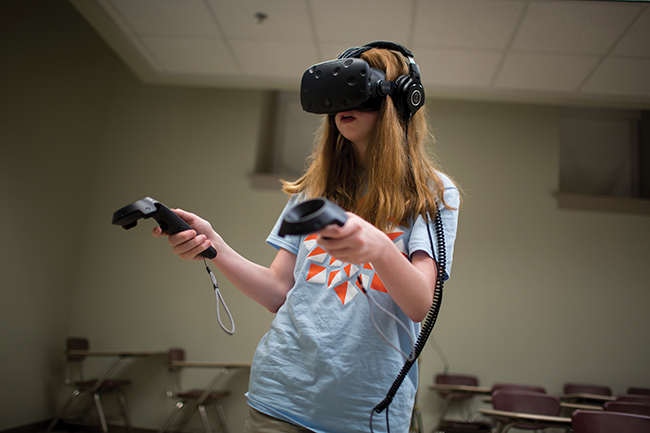
Maddie Pasquale, 14, uses a virtual reality headset during GirlPowered!
Photo by James Brosher, IU Communications



